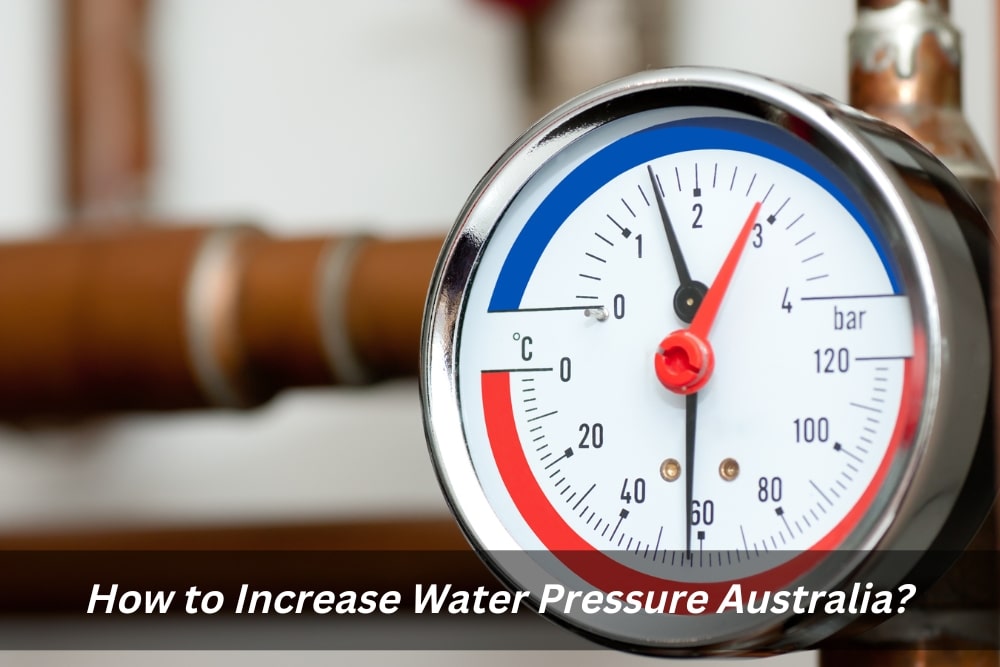In this blog post, we’ll discuss How to Increase Water Pressure At Home in Australia, and some tips other tips. Apex Plumbing Services is at your service 24/7, so if you believe your house’s plumbing has any of the following issues, you can give us a call, anytime.
Do you ever feel like you’re struggling to get enough water pressure from your washing machine, shower or taps? If you’re experiencing low water pressure, don’t worry – you’re not alone! Many people experience low water pressure and flow and struggle to get the flow they need. Whether your water is coming from a well or the municipal supply, most water pressure issues are a result of old, corroded pipes.
If your pressure is low in a particular faucet but normal in other faucets, then focus on repairing the faucet with low water flow. However, if the low water flow affects the entire home, then the problem is most probably with the main water supply. We inspect every square inch of your plumbing and ensure all your pipes are fully opened to increase the pressure of your flow rate. If you’re looking for a way to boost your water flow, read on! Apex Plumbing Services deal with any plumbing issues you may have.
Low Water Pressure – Check These Reasons
Here are some Reasons to check if you are facing Low Water Pressure
Water Leaks:
If you notice a rapid rather than a gradual decrease in water pressure, there might be a leak in your pipes. Obvious sources are easy to detect, but if you can’t spot any obvious water leak, you may have an underground leak. CCTV footage from your plumber will aid him in locating the problem.
Pipe Corrosion
Regardless of the age of your water pipes, there is always a gradual build-up of corrosion that isn’t regularly flushed through the system. Even if most water pipes are built to endure 20 years or more, you will notice a drop in pressure sooner or later as a result of corrosion. Corroded pipes must be replaced by an expert plumber.
Low Hot Water Pressure
Your hot water system might not be able to provide as much heat as your home requires. This might be due to a greater demand for hot water at once than the capacity of your hot water system can supply. It may also be caused by a faulty pressure valve on your hot water system or pipes that can’t handle the required volume of heat. Replacing the valve is simple, but if you have insufficient pipe space or if your hot water system isn’t capable of delivering the necessary volumes of heated water, you’ll need to think about your options.
Debris and Mineral Build-Up in Pipes:
Debris and minerals can build up in your water pipes over time and gradually reduce the water pressure. Sand, dirt, and other pollutants that enter through your home’s sinks or a tiny crack in the pipes, as well as minerals from the water, all decrease the pipe diameter, resulting in decreased water pressure. CCTV may be used by your plumber to identify any debris or mineral accumulation that is causing the reduction in pressure.
Multiple Faucet Use and Small Pipes:
With more people wanting multiple bathrooms and other water sources in their homes, this inevitably leads to more than one shower or tap being utilized simultaneously. Naturally, using many outlets at the same time will continue to decrease the pressure down the road, even if you don’t have an expansion in your mains water pipe’s capacity that delivers water to your property.
Partially Shut Valves:
Low water pressure is frequently caused by partially shut valves that restrict the amount of water flowing into your home’s outlets. These are generally found near the faucets and other water sources, as well as a pressure release valve and the main water valve that can get stuck half-open. An experienced plumber should be hired to find and repair the faulty valve, and we can help with that.
Council Water Supply Malfunctions:
Occasionally, the problem isn’t with your house; it’s with the council’s water supply to your property. Their pipes are just as prone to dirt, debris, erosion, mineral buildup, and fractures as yours are. It’s always a good idea to double-check with your local water provider before calling in a plumber.
Still Confused! Check out What to Do When There’s No Hot Water Coming Out
Don’t Stress- Apex Plumbing Services is Here to Help.
Now that we’ve covered the potential causes for your low pressure, you may be feeling a little overwhelmed at the number of issues your home may be facing. But don’t worry – most of these problems can be easily fixed without having to replace your entire piping system! Our team of qualified professionals with years of enriched experience in the field can help you. We’re available 24/7, so if you believe that you’re home is experiencing a plumbing emergency, we are at your service! So, if you’re experiencing low water pressure, the first step is to identify the underlying cause. Or, we can send out one of our plumbers to identify the underlying cause for you, anytime, any day. Once you know what’s wrong, it will be much easier to find a solution.
Here Are The Ways We At Apex Plumbing Can Help You:
Test your Water Pressure
Homes that receive water from municipal water supply systems often have a water pressure regulator. The regulator is mostly located after the main water meter. Try adjusting the regulator by yourself. However, monitor the water pressure to ensure you don’t adjust it excessively. You can check the pressure by screwing a water pressure gauge on any spigot in your laundry room or basement and then opening a faucet.
- Hook up the pressure gauge to an outside water spigot.
- Turn on the water.
- Read the instant reading.
- Make sure the shutoff valves near the water meter are fully open.
- If the reading is low, the city may be delivering water at low pressure (less than 40 psi)
- If your house is on city water, ask your local water department for a pressure reading.
- A reading of 45 to 55 psi is ideal.
Flushing Your Water Heater
If your water heater’s faucets have low pressure, it’s likely that the tank is clogged with scale buildup. We recommend that you flush your water heaters once every year. Failure to do so results in blockages of the water outlet and inlet, resulting in low water pressure. You should clean the tank by emptying it and disconnecting all the pipes so we can dissolve all the scale buildup within the tank.
Clean the Faucets
If your sink or shower faucet has low water flow, then it’s probably due to the build-up of scale within the faucet valve or aerator. In this case, we inspect every square inch, remove the aerator and use high-quality cleaning agents to remove any scale build-up. Once the aerator is reattached, if there’s no improvement in water flow then we’ll need to disassemble the entire faucet and perform a deep clean in every crevice of the sink or shower.
Replace Any Corroded, or Leaking Plumbing
Pressure issues can also happen from galvanized pipes. These pipes tend to corrode within them, thereby narrowing them down. As a result, the water flow will reduce due to the reduced interior diameter. In case they have corroded to the extent of making the pressure of water coming from the faucets too low, then it’s time to replace the pipes. Sometimes, there can be severe damage within the internal pipes, if this is the case then we would have to replace the affected pipes.
We deal with issues ranging from:
- washing machine problems
- water pipe issues
- faulty water meter
- pressure gauge problems
- supply system issues
- faulty hot water system
- leaky taps, toilets or showers
- clogged drains, and more!
If you believe you may be experiencing one or more of the issues listed above, call Apex Plumbing Services now so that you can finally enjoy a home with good water pressure, today. Our helpful staff is at your service and just a call away!


